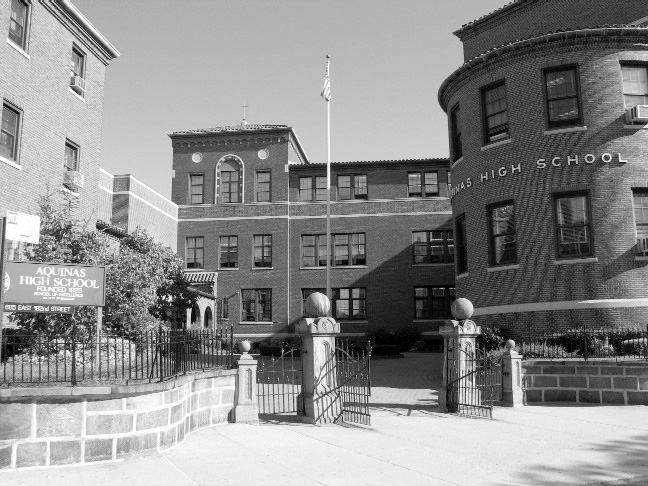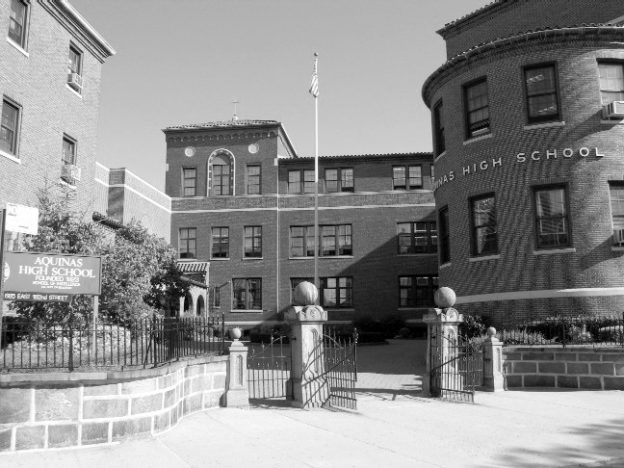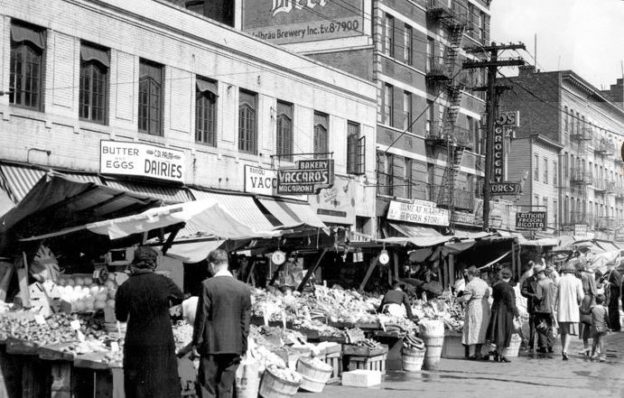Belmont was originally part of the Town of West Farms (incorporated 1846), which, with the Towns of Kingsbridge and Morrisania, was annexed by New York City in 1874. From 1901 to 1973 Belmont was served by the Third Avenue Elevated, which had stops at 180th Street, 183rd Street and Fordham Road.
Today, the easiest way to get to Belmont from Manhattan is by Metro-North to Fordham. A short walk east along Fordham Road, with Fordham University’s beautiful campus on one’s left, takes one to Arthur Avenue, the main commercial artery of Belmont, renowned as The Bronx’s “Little Italy,” though the neighborhood also contains sizable representations of Albanians and Mexicans. Notable residents have included the esteemed novelist Don DeLillo (b. 1936), who was born and grew up near Arthur Avenue (and who attended Fordham University) and was the recipient of the National Book Award in 1985 for his novel White Noise. DeLillo’s novel Underworld (1997) is partly set in the neighborhood.
Perhaps the most famous of Belmont’s native sons is Dion Francis DiMucci (b. 1939), who grew up at 749 East 183rd Street, at Prospect Avenue. A member of the Rock and Roll Hall of Fame, Dion (he has always been known by the single name) was one of the most popular recording artists in the world in the late 1950s and 1960s, and has been counted a principal influence by Paul Simon, Bruce Springsteen and Lou Reed. Dion got his musical start by singing a cappella on Belmont street corners. With three other neighborhood boys, he formed Dion and the Belmonts in 1957. Belmont is also notable as the setting of the Academy Award-winning film Marty (1955). Locals like to point out that actor Joe Pesci was “discovered” by Robert DeNiro while tending bar at Amici’s, an Arthur Avenue restaurant. Another important cultural touchstone for the neighborhood is the off-Broadway play, film, and Broadway musical A Bronx Tale by Chazz Palminteri.
Fordham University, on the northern border of Belmont, originated as St. John’s College in 1841. The campus was built on the Rose Hill manor farm of Robert Watts. Renamed as Fordham University in 1907, it was the first Roman Catholic college in the northeastern United States. Among Fordham’s countless notable alumni are Congress Member Geraldine Ferraro, Governor Andrew Cuomo, CIA director William Casey, Attorney General John Mitchell, football coach Vince Lombardi, baseball announcer Vin Scully, novelist Don DeLillo, and actor Denzel Washington.
Belmont was once part of the landholdings of the Lorillard family. The Lorillard tobacco firm was founded in 1760 and moved to this part of The Bronx in 1792. In 1870, the family moved their manufacturing operations from The Bronx to Jersey City, and in 1888, the city acquired the eastern section of the Lorillard lands for incorporation into Bronx Park. The western section—today’s Belmont—was subdivided for development. Many Italian immigrants were attracted to the area by jobs in the construction of the New York Botanical Garden (opened 1891), the Bronx Zoo (opened 1899) and the Jerome Park Reservoir (opened 1906). There is a persistent myth that Arthur Avenue was named by one of the Lorillards in honor of President Chester A. Arthur. However, the name “Arthur Street” appears on the New York City Department of Public Parks topographical map of the Bronx in 1873. That is eight years before Arthur became president, making it unlikely that the avenue was named for him.
To learn more about the area, visit www.BronxLittleItaly.com.


